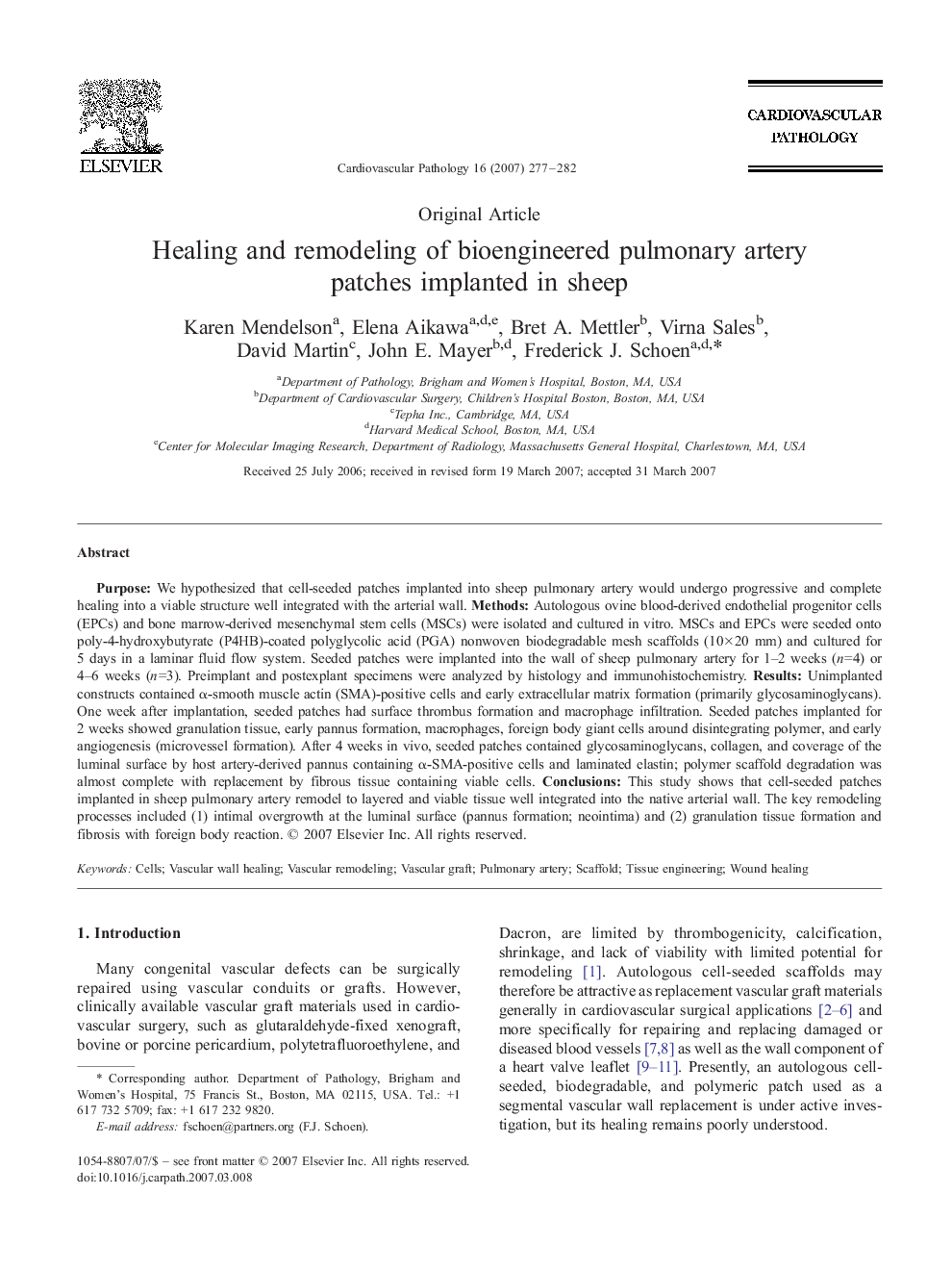| کد مقاله | کد نشریه | سال انتشار | مقاله انگلیسی | نسخه تمام متن |
|---|---|---|---|---|
| 2899276 | 1173127 | 2007 | 6 صفحه PDF | دانلود رایگان |

PurposeWe hypothesized that cell-seeded patches implanted into sheep pulmonary artery would undergo progressive and complete healing into a viable structure well integrated with the arterial wall.MethodsAutologous ovine blood-derived endothelial progenitor cells (EPCs) and bone marrow-derived mesenchymal stem cells (MSCs) were isolated and cultured in vitro. MSCs and EPCs were seeded onto poly-4-hydroxybutyrate (P4HB)-coated polyglycolic acid (PGA) nonwoven biodegradable mesh scaffolds (10×20 mm) and cultured for 5 days in a laminar fluid flow system. Seeded patches were implanted into the wall of sheep pulmonary artery for 1–2 weeks (n=4) or 4–6 weeks (n=3). Preimplant and postexplant specimens were analyzed by histology and immunohistochemistry.ResultsUnimplanted constructs contained α-smooth muscle actin (SMA)-positive cells and early extracellular matrix formation (primarily glycosaminoglycans). One week after implantation, seeded patches had surface thrombus formation and macrophage infiltration. Seeded patches implanted for 2 weeks showed granulation tissue, early pannus formation, macrophages, foreign body giant cells around disintegrating polymer, and early angiogenesis (microvessel formation). After 4 weeks in vivo, seeded patches contained glycosaminoglycans, collagen, and coverage of the luminal surface by host artery-derived pannus containing α-SMA-positive cells and laminated elastin; polymer scaffold degradation was almost complete with replacement by fibrous tissue containing viable cells.ConclusionsThis study shows that cell-seeded patches implanted in sheep pulmonary artery remodel to layered and viable tissue well integrated into the native arterial wall. The key remodeling processes included (1) intimal overgrowth at the luminal surface (pannus formation; neointima) and (2) granulation tissue formation and fibrosis with foreign body reaction.
Journal: Cardiovascular Pathology - Volume 16, Issue 5, September–October 2007, Pages 277–282